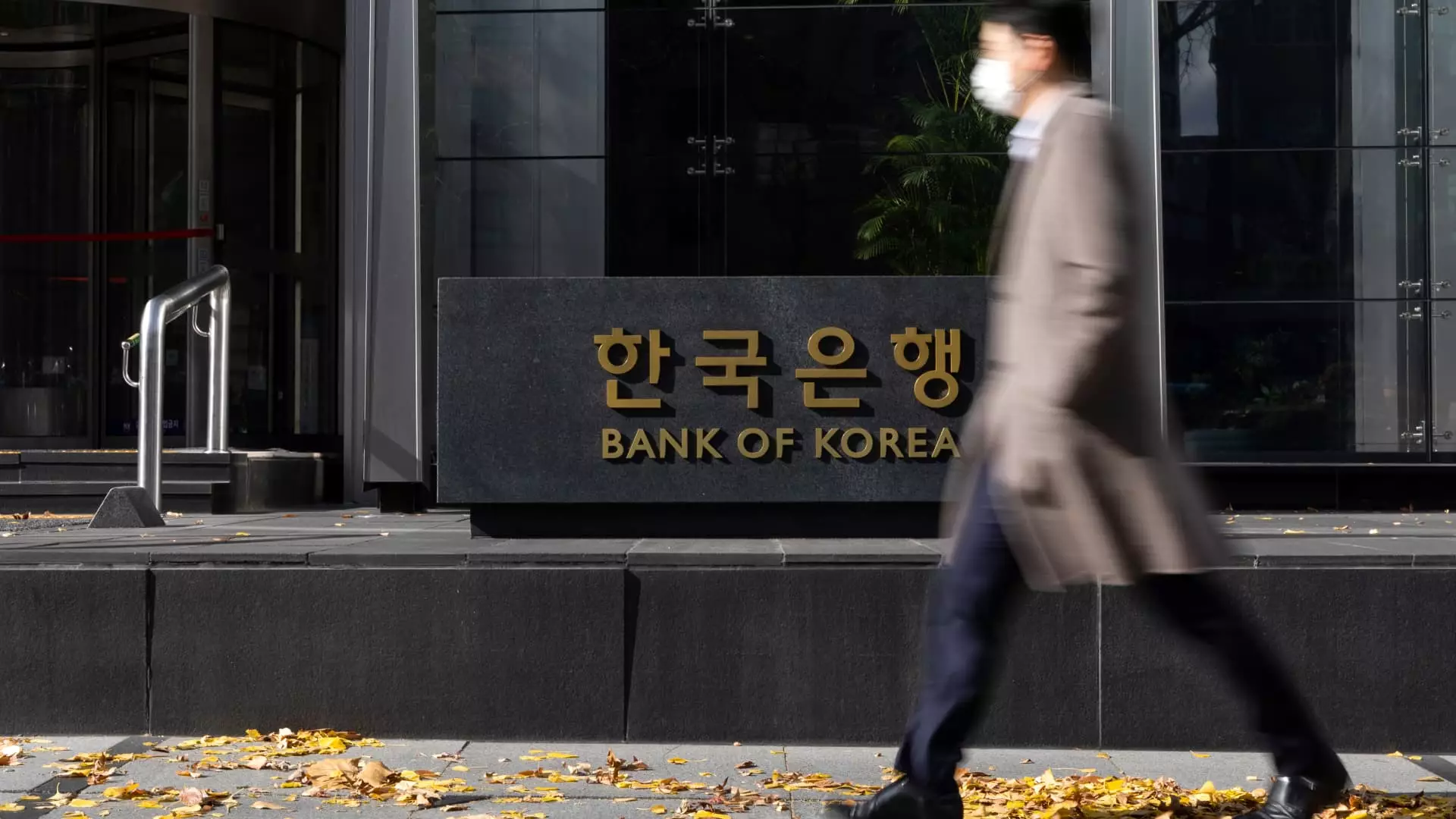In a move that caught many analysts off guard, the Bank of Korea (BOK) announced a 25 basis point decrease in its benchmark interest rate on Thursday. This action marks a significant monetary policy shift for South Korea, especially as it represents the first instance of consecutive rate cuts since the aftermath of the global financial crisis in 2009. Previously, the BOK had adjusted rates downward in October, indicating a deliberate strategy to address growing economic challenges. Many economists had anticipated the bank would maintain its current rate at 3.25%, reflecting a prevailing uncertainty about the country’s economic trajectory amidst sluggish growth.
Economic Indicators Reveal Weakness
The context for this unexpected rate cut is the latest economic data, specifically regarding Gross Domestic Product (GDP). South Korea’s economy expanded by a mere 1.5% year-on-year in the third quarter, falling short of the 2% growth that analysts had predicted. This disappointing performance led the BOK to revise its economic outlook for 2024, lowering it to 2.2% from an earlier estimate of 2.4% made in August. For 2025, the forecast has also shifted downward from 2.1% to 1.9%. This trend reflects the increasing pressures on the economy, despite recent stabilization in inflation rates.
The BOK’s decision to cut interest rates comes amid a notable slowdown in inflation, with October’s reading showing an increase of only 1.3%—the lowest level since February 2021. Although prior concerns about inflation seemed to ease, the central bank’s statement indicates that external pressures on the economy have intensified. As the BOK has pointed out, the falling value of the South Korean won against the U.S. dollar has become a critical factor in its monetary policy considerations. The won has faced significant depreciation, hitting two-year lows and spurring concerns over the implications of a weakened currency on the economy.
With these developments, the central bank has voiced that mitigating downside risks to the economy has become paramount. This is a critical juncture for South Korea as it navigates a complex economic landscape characterized by slow growth and currency fluctuations. The BOK Governor Rhee Chang-yong has indicated that future rate adjustments will be influenced heavily by ongoing currency performance. The potential for further rate cuts will depend on whether the won stabilizes or continues to depreciate, which could trigger new challenges for the economy.
The Bank of Korea’s decision to cut interest rates in succession is indicative of a proactive approach to revitalize an ailing economy. As the nation grapples with slow growth, shrinking forecasts, and a depreciating currency, the unfolding economic narrative will be shaped largely by these monetary policy measures. Stakeholders, including businesses and consumers, will need to remain vigilant as these changes take effect, and they must be prepared for the complex interplay between interest rates, inflation, and currency performance going forward.


Leave a Reply